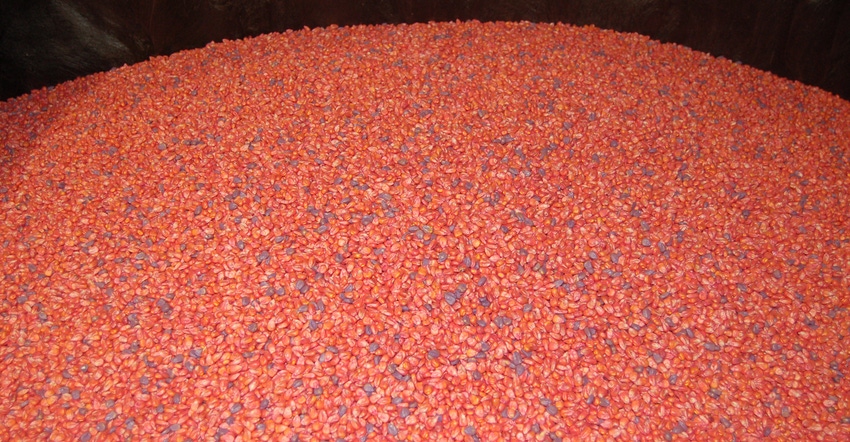
Once you settle on your target goal for an economic optimum plant population for corn, you’re only halfway home. Bob Nielsen says the next step is determining the economic optimum seeding rate. That’s the mark you try to achieve while planting, and the number you need to know if you have purchased enough seed corn.
“We offer projections for agronomic and economic optimum plant populations, but we leave calculating the optimum seeding rates up to you,” says Bob Nielsen, a Purdue University Extension agronomist and corn specialist. Nielsen and Jim Camberato, also a Purdue Extension agronomist, have compiled agronomic and economic optimums based on 83 field trials in Indiana dating back to 2008. They excluded trials that suffered through severe drought conditions.
“We found that the yield response curve to plant population is shallow, or nearly flat,” Nielsen says. “The optimum agronomic yield based on our data is at about 32,500 plants per acre for a harvest population. However, there is only about a 1-bushel-per-acre difference from 28,000 to 35,000 plants per acre. That’s why the response curve is nearly flat.
“The economic optimum plant population for corn in most of Indiana is amazingly low. If you’re on drought-prone land, you can drop the population another 5,000 to 10,000 plants per acre.”
For more details about determining economic optimum plant populations, see Find best corn population for your farm in 2020.
Seeding rate
“We leave determining seeding rate up to each individual because the ability to achieve stands varies from farm to farm,” Nielsen says. “In our trials, the average is about 95%.
“Maybe you achieve 95%. Or maybe you do better or not quite so good. Your percentages of seeding rate to actual harvest population might be 90%, 98% or 85%. Plug in your percent to calculate where you need to set seeding rate on your planter.”
Typical germination listed on seed corn tags is often around 95%. Other factors include planter performance, uniformity of depth placement and potential loss due to insect or disease damage.
To calculate seeding rate, start with your population goal, Nielsen explains. Then simply divide by the percent final stand you expect to obtain. That gives you a target for seeds per acre for setting your planter. Here are some examples:
Suppose your goal is 30,000 plants per acre with 95% emergence. Seeding rate is 30,000 divided by 0.95 equals 31,578. Your seeding rate should be about 31,500 seeds per acre.
Suppose your goal is 30,000 plants per acre but germination is high — you can achieve 98% stand. Seeding rate is 30,000 divided by 0.98 equals 30,612 seeds per acre.
Same goal of 30,000 plants per acre, but only 90% stand: 30,000 divided by 0.9 equals 33,333 seeds per acre.
Same goal of 30,000 plants per acre, but only 85% stand: 30,000 divided by 0.85 equals 35,294.
So, to achieve 30,000 plants per acre, the seeding rate could vary from just over 30,600 to 35,300 seeds per acre, depending on what your seed germination and past track record at obtaining stands indicates, Nielsen says.
Nielsen and Camberato offer a table showing economic optimum plant populations based upon their data, varying with the seed price you pay and the corn price you expect. If you pay $250 per unit and sell at $3.50 per bushel, the economic optimum harvest population is 26,050 plants per acre. The seeding rate at 95% would be 26,050 divided by 0.95 equals 27,421 seeds per acre. If you only achieve 90% stand, it should be 26,050 divided by 0.95 equals 28,940 seeds per acre.
Here is the full table of economic maximum plant populations and more information about converting to seeding rates.
About the Author(s)
You May Also Like




